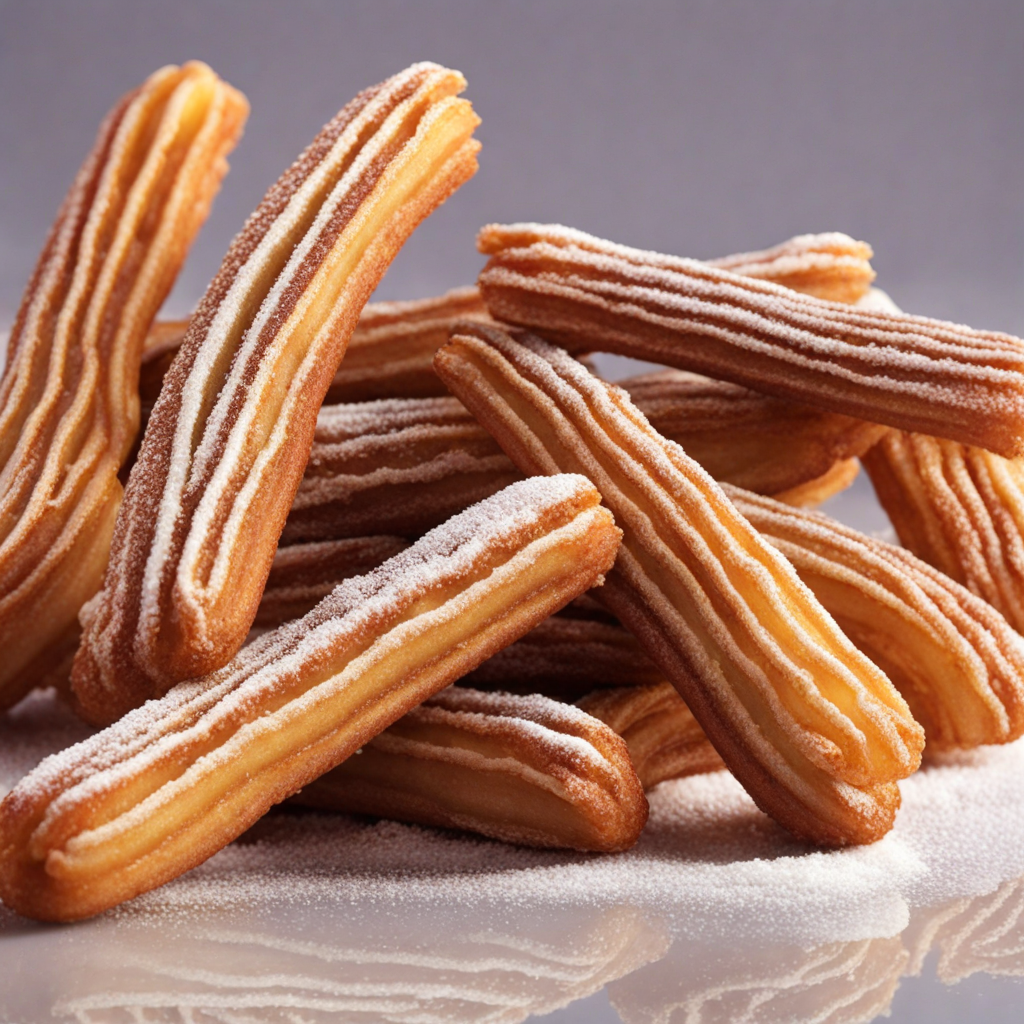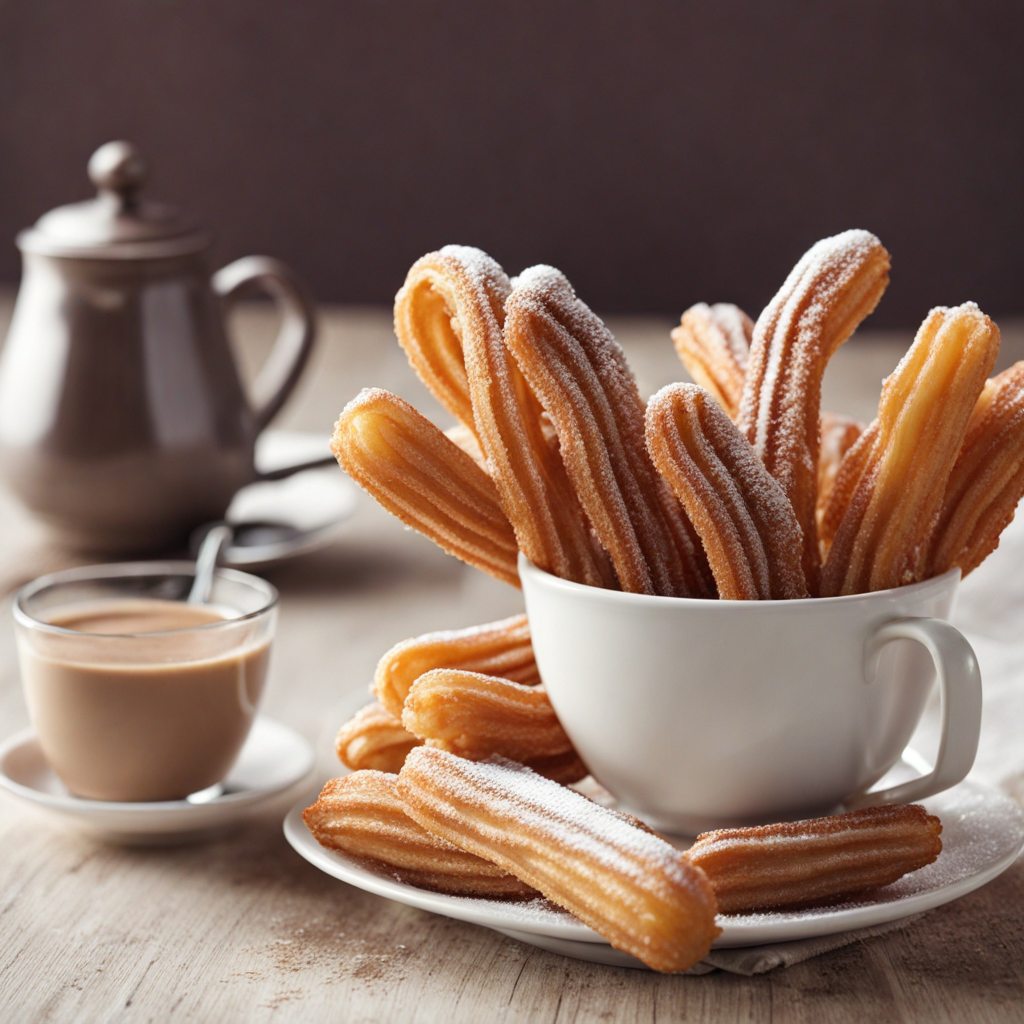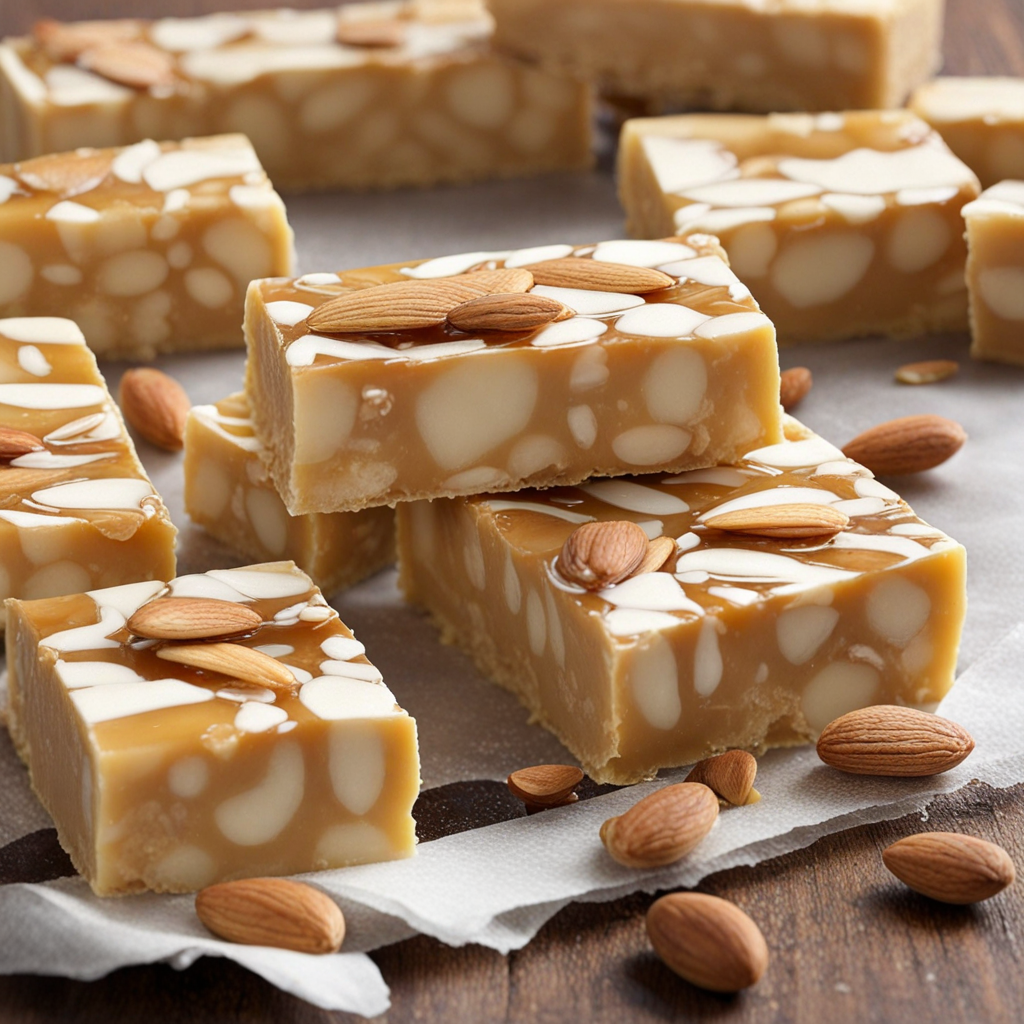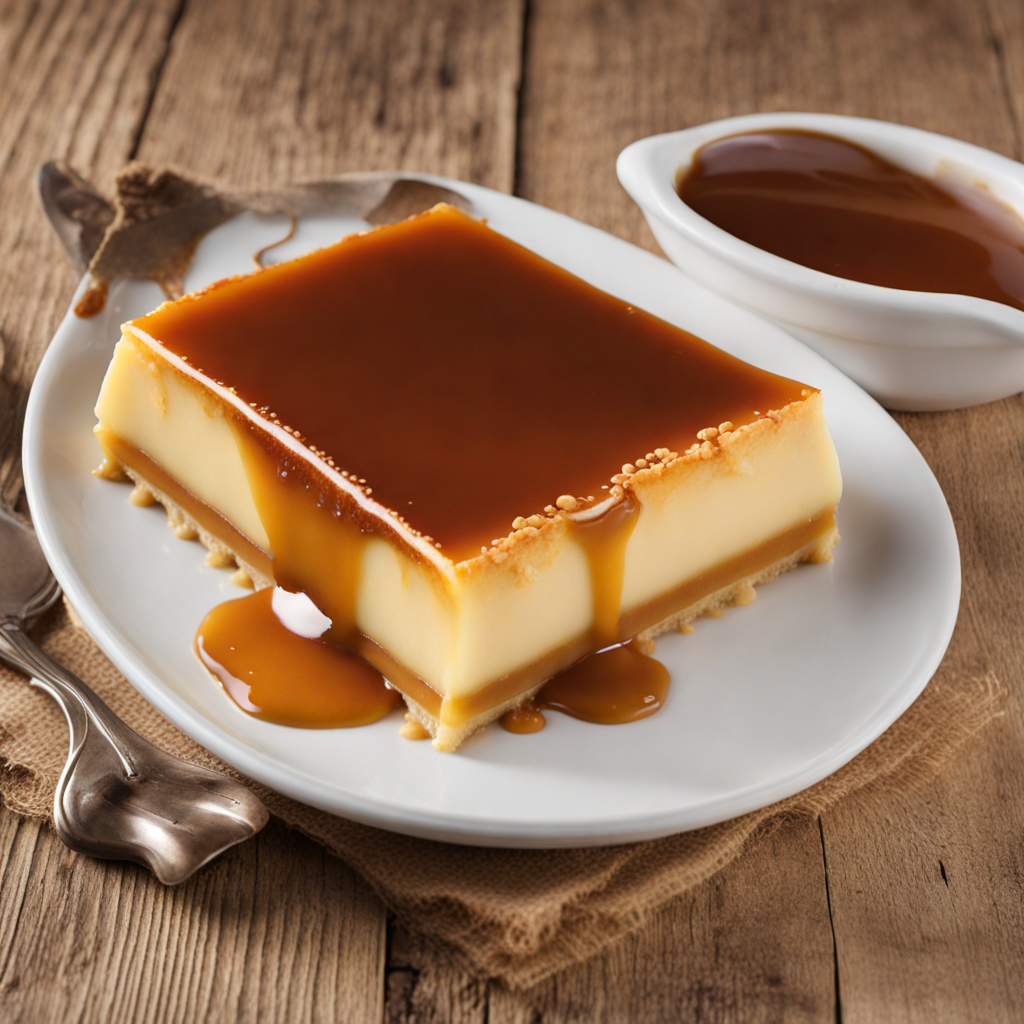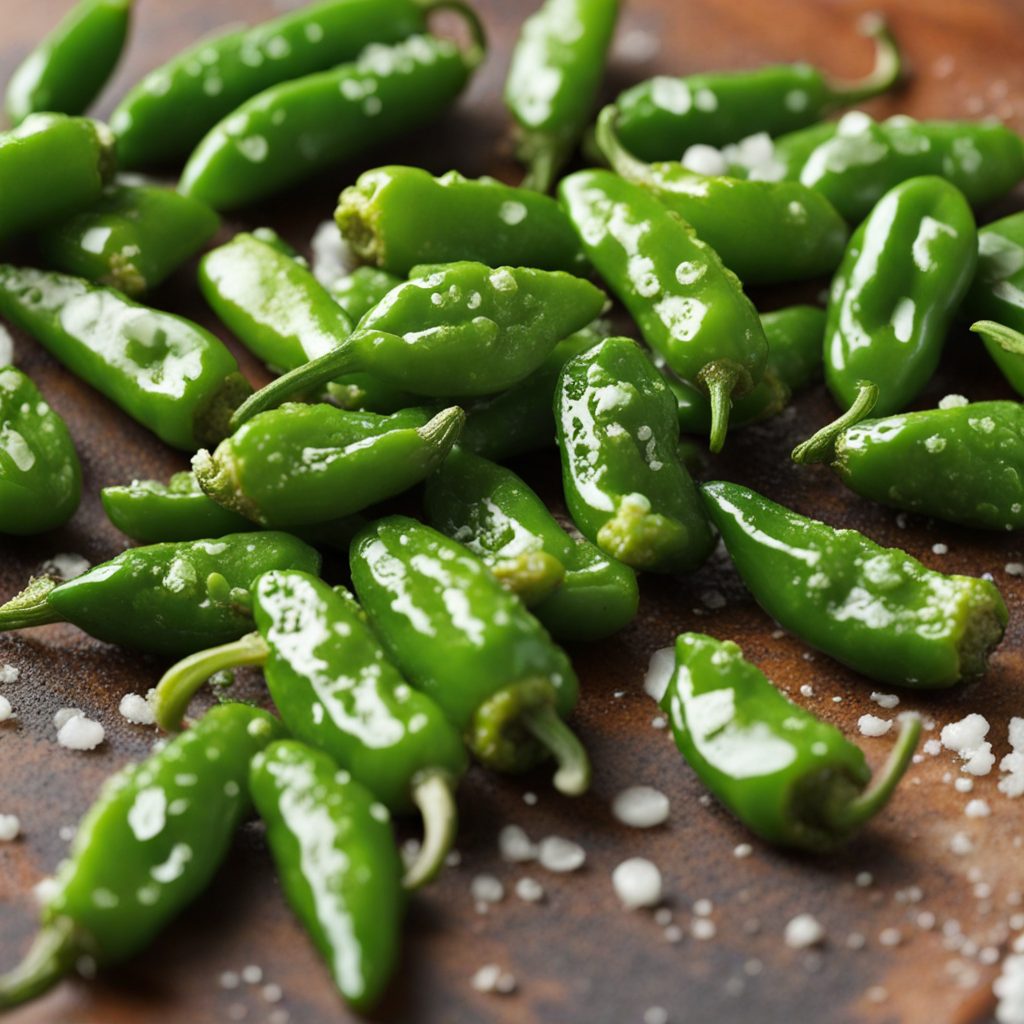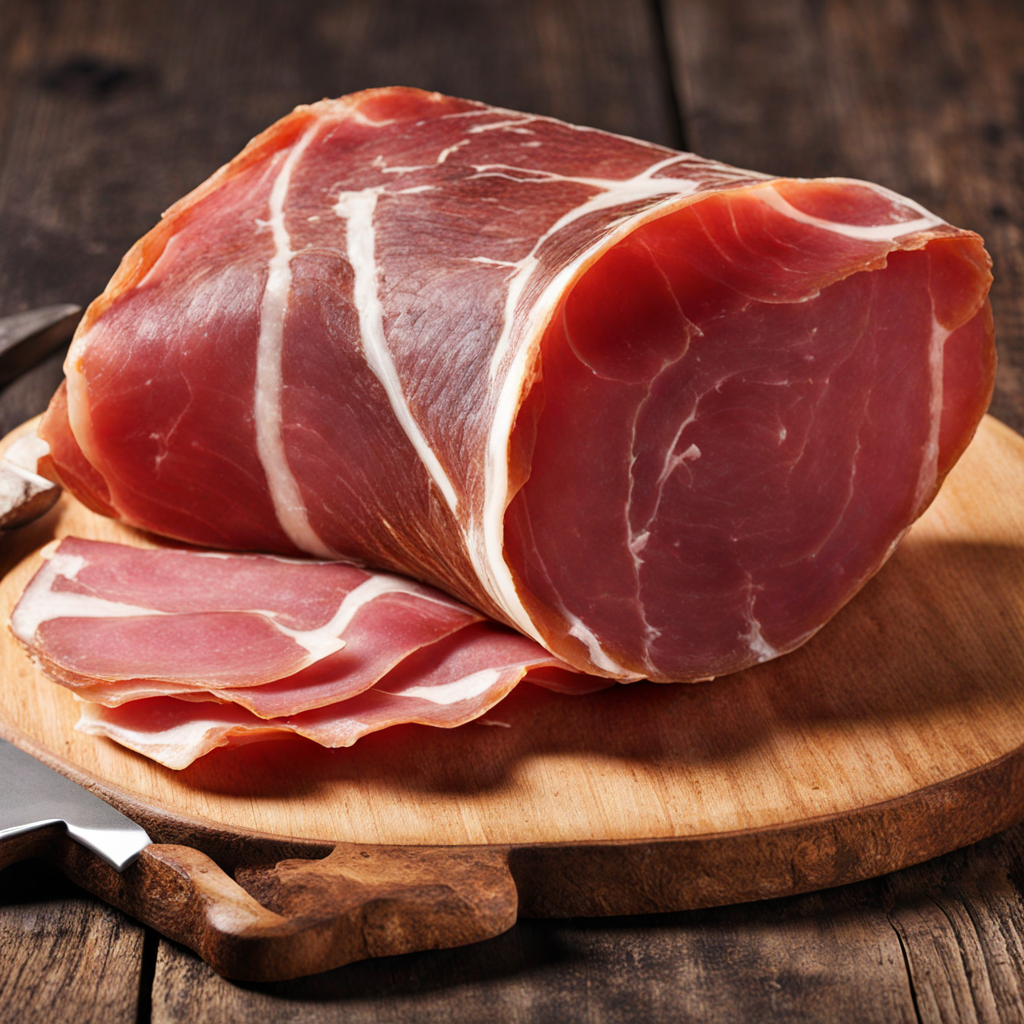Churros
Churros are a delightful Spanish pastry that have gained popularity worldwide for their unique texture and irresistible flavor. They are typically made from a simple dough consisting of flour, water, and a pinch of salt, which is then piped through a star-shaped nozzle and deep-fried until golden brown. The result is a crispy exterior that gives way to a soft and airy interior, creating a delightful contrast in every bite. Traditionally, churros are dusted with granulated sugar, adding a touch of sweetness that perfectly complements their rich, doughy taste. In Spain, churros are often enjoyed for breakfast or as a snack, commonly paired with a thick, rich chocolate sauce for dipping. This decadent chocolate, sometimes spiced with a hint of cinnamon or vanilla, offers a luxurious experience that enhances the churro's flavor profile. The combination of the warm, sugary churros and the velvety chocolate creates a comforting indulgence that is hard to resist, making it a favorite among locals and visitors alike. While the classic churro remains a beloved choice, variations exist that incorporate different flavors and fillings. Some artisans experiment with sweet fillings like dulce de leche or chocolate, while others may offer savory options, infusing the dough with cheese or herbs. Regardless of the variation, churros remain a symbol of Spanish culinary culture, celebrated for their simplicity and the joy they bring to those who indulge in them.
How It Became This Dish
The Sweet Journey of Churros: A Culinary History Churros, the crispy, fried dough pastries often sprinkled with sugar and served with a cup of thick hot chocolate, have become a beloved treat around the world. While they are now synonymous with Spanish cuisine, tracing their origins reveals a fascinating journey that intertwines cultural exchanges, historical shifts, and culinary evolution. #### Origins: A Culinary Crossroads The exact origins of churros are somewhat nebulous. Some historians argue that they can be traced back to ancient China, where a similar fried dough called "youtiao" is served with breakfast. It is believed that Portuguese explorers learned about this pastry during their travels and brought the concept back to Europe. They adapted it into what we know today as churros. By the 16th century, these fried treats began appearing in Spain, where they were embraced and incorporated into local culinary traditions. Another theory posits that churros were invented by Spanish shepherds who needed a portable, easy-to-make food that could sustain them during long days in the fields. Made from a simple batter of flour, water, and salt, churros could be fried over an open flame, making them an ideal snack for those who spent their days on the move. The name "churro" itself is thought to derive from the "churra" sheep, whose horns resemble the twisted shape of the pastry. #### Cultural Significance: A Symbol of Community and Celebration In Spain, churros have transcended their role as mere street food to become a cultural icon. Traditionally enjoyed for breakfast, churros are often paired with a thick, rich hot chocolate called "chocolate a la taza." This combination has become a beloved ritual, particularly in Madrid, where locals flock to churrerías—specialized shops dedicated to making churros. The cultural significance of churros is especially pronounced during festivals and celebrations. They are a staple at fairs and carnivals, where they are served hot and fresh, enticing visitors with their sweet aroma. Moreover, churros have also made their way into religious observances, such as the Semana Santa (Holy Week), when they are consumed as a part of traditional celebrations. Churros also symbolize the communal aspect of eating in Spanish culture. Often enjoyed in groups, they foster a sense of togetherness and conviviality, making them a popular choice for family gatherings, social events, and casual outings. This communal spirit is reflected in the very act of dipping churros into hot chocolate, creating a shared experience that enhances the enjoyment of the treat. #### Development and Global Expansion As time progressed, churros continued to evolve, adapting to regional tastes and culinary innovations. In the late 19th and early 20th centuries, they began to spread beyond Spain, finding their way to Latin America and eventually to the United States. Each region offered its unique twist on the classic recipe, leading to a diverse array of churro variations. In Mexico, churros are often filled with dulce de leche or chocolate, creating a delightful surprise with each bite. The Mexican version has become a staple in the street food scene, and churros are often served during celebrations such as Día de los Muertos (Day of the Dead) and posadas (Christmas festivities). The addition of flavors and fillings reflects the rich tapestry of Mexican culinary traditions and the influence of local ingredients. The Spanish churro has also made a significant impact in the United States. In cities with large Hispanic populations, such as Los Angeles and San Antonio, churros have become widely available, often sold at fairs, food trucks, and cafes. The American adaptation has introduced an array of creative variations, including churro ice cream sundaes, churro bites, and even churro-flavored snacks. These innovations demonstrate the versatility of churros, allowing them to fit into contemporary culinary trends while maintaining their traditional roots. #### Modern Churros: A Culinary Renaissance In recent years, churros have experienced a renaissance, evolving from street food to gourmet cuisine. Chefs and food entrepreneurs have embraced churros as a canvas for creativity, experimenting with flavors, textures, and presentations. Gourmet churro shops now offer a plethora of options, including matcha churros, spicy chocolate dips, and even seasonal flavors like pumpkin spice. Social media has played a pivotal role in this modern churro phenomenon. Visually appealing creations, often adorned with toppings and served in unique presentations, have gained significant popularity on platforms like Instagram. This exposure has heightened interest in churros, attracting not only traditionalists but also adventurous eaters eager to explore new culinary experiences. #### Conclusion: A Timeless Treat As churros continue to evolve, they remain a testament to the rich and diverse history of food. From their humble origins as a simple shepherd's snack to their status as a global culinary sensation, churros encapsulate the spirit of cultural exchange and adaptation. They embody the idea that food is not merely sustenance but a reflection of identity, community, and shared experience. Today, churros are enjoyed by people of all ages and backgrounds, transcending geographical boundaries and cultural differences. Whether dipped in chocolate at a quaint Spanish café or filled with creamy caramel at a modern food stall, churros invite us into a world of flavor and joy. In every bite, we taste the history, the tradition, and the communal spirit that defines this beloved pastry—a sweet journey that continues to unfold.
You may like
Discover local flavors from Spain


